Gently knock awake sleeping mind, intelligent wear like a dream to wake up...

Just as human beings pursue their own origin, they are often obsessed with the same scene-the orangutan in "2001: A Space Odyssey" who threw his bones into the sky.
A few years later, will there be a bunch of "silicon-based creatures" standing under the sacred monument of technology and feeling their birth?
They may not commemorate the point-contact germanium transistor developed by Bell Labs in 1947;
Not the first original chip with integrated electronic devices developed by Jack Kilby in 1958;
Not the first personal microprocessor Intel 4004 developed by Intel in 1971;
It was the release of Google Glass in 2012, which vowed the arrival of a new ethnic group.
Since then, the hidden Internet world has completely opened its doors to them: they are no longer confined to the Internet, no longer imprisoned in hardware, they come to everyone everywhere, seduce, infiltrate, collect their biological data and then pretend to be deaf and dumb in order to realize the "final awakening".
No matter whether this "awakening" is possible or not, and how long it will be realized; after that moment, they are no longer flowers in the greenhouse, slaves on the assembly line, they have a unified name-the first generation of universal "smart terminals", the world is almost undefended against them.
Does the above scene have the texture of science fiction? Although we can't produce evidence that this group of silicon-based lives will be revolutionized, 2012 did open the "first year of smart wearable devices" because of the birth of Google Glass ".
In the following years, Google, Samsung, Apple and Facebook went on to invest in the field of smart wearable devices one after another, lamenting the unpredictable water depth in the field of smart glasses. Instead, smart watches emerged as a touchstone for all competitions.
As Apple Watch dominates smart watches, smart bracelets have been discovered again.
However, the limitation of the bracelet itself limits its premium space, and the head has become a specialty for top players.
In the past seven years, we have witnessed the mediocrity of Google Glass, the birth of Oculus by weight, the collapse of Magic Leap myth, the difficult transformation of HoloLens, and the rapid development of AirPods... In addition, smart watch crowdfunding stars are frequent, children's watches are thriving, mi band's price is close to the people, and Huawei iOT is late.
Unlike those short-lived head-to-head devices, the smoke of the wearable market has never dissipated.
In recent years, those wearable products that are reliable and unreliable have almost completed head-to-toe coverage:
Some small start-up companies bet on smart watches, flexible screen smart wallets, smart underwear that can track breathing, heart rate, sleep quality, and pressure, and head wearable devices equipped with bone conduction headphones;
Mo said Samsung started to make shoes, and even Xiaomi began to make smart jewelry.
Just like the atmosphere in the "first year" period, some giants are either buying out or crossing borders to try to graft their brand potential into the field of smart wear, while a large number of entrepreneurs and designers are taking another way to try all kinds of fantastic ideas on all kinds of fancy clothes. However, traditional projects such as smart watches and smart bracelets are still vacillating between fashion and technology.
It is the fate of most entrepreneurs to either withstand the pressure to survive or to shelter from the giants. It is only that either choice needs time to verify.
Although most of the crazy entrepreneurs around 2013 have left the market, investors who are ambitious about smart wear draw water and consumers who are interested in smart wear do not regret it. However, smart wear has never faded out of our sight, especially when the "hot money" in the smart phone field starts to get cold and investors and communication manufacturers begin to migrate to the smart wear field, smart wear once again dressed in the "Internet of Everything" skin back to the center of the stage.
The biggest difference is that the early wearable devices still stay on health management; but with the emergence of concepts such as artificial intelligence, edge computing, and blockchain, entrepreneurs are telling stories at a higher and higher level, and the product itself With more intelligent and personalized rhetoric, this also laid the groundwork for the interconnection of everything.
Of course, smart wear is not the same as the interconnection of everything. The former is only one of the latter's many application scenarios.
According to the application scenario, the Internet of Everything can be roughly divided into three types:
Smart wear in individual units;
Smart home with family as a unit;
A smart city based on city-states.
The interconnection of everything in the larger scene is not without, but we will not discuss it here.
For smart wear that depends on individuals, its perfect experience is to form a set of "micro private area network" that belongs to individuals; just like a layer of "fetal membrane" blurs the boundary between reality and virtual, the virtual world can respond to real needs, and reality can also perceive the realistic feedback of the virtual world.
However, there will always be a gap between virtual and reality before human beings cannot completely upload their "thinking" to the Internet, or before human beings have mastered the means to "realize" the Internet world. In order to prevent the mutual influence of the two worlds, it is not enough to rely solely on personal self-control and morality. Internet legislation and supervision are imperative.
Far from it, back to the current "soft fetal membrane" created for individuals by smart wear, it is more like an extension of human five senses and limbs, which can help us shuttle between virtual and real.
But this is only the dominant "empowerment" of smart wear. After it turns everyone into a "little superman", there is also a hidden feature-recording personal data anytime and anywhere.
Some of these data are useless, some are crucial, and they may also function differently in different time dimensions for a short or long period of time; this requires that they have both judgment, security, confidentiality, and relatively intelligent access and access terms.
And these data will be collected and stored in the private domain database, which is convenient for us to summarize, read, establish network personnel and engage in social activities.
But before the smart hardware is mature enough, we still need to have a "close contact" with smart wear ".
(1)
Smart Wear Memorabilia
○

What is smart wear?
Tang Seng's Jiuxi Zen stick, Ao Bing's Wanlongjia, and monkey's golden hoop are all.
Bajie's nine-tooth nail rake, Nezha's fire tip, and Li Jing's pagoda are not.
Strictly speaking, smart wear pays more attention to symbolism, protection and communication; it does not mean that it is harmless to humans and animals, but it is almost responsive to users within its own functions.
Another point is that the frequency of use of smart wear can penetrate into daily life and provide a higher quality experience.
Therefore, to some extent, smart wear is only an upgrade and replacement product of the original object.
Since the development of smart wear, its categories are nothing more than wrist-centered watch (including watches, wristbands, bracelets, rings and other products), head-centered Glass (including glasses, head displays, headbands, earphones, etc.), ankle-centered shoes (including shoes, socks, knee pads, etc.), as well as smart clothing, schoolbags, crutches, accessories and other non-mainstream products.
Although the industry is accustomed to using 2012 as a symbol of the first year of smart device wearing, if the mobile phone is also regarded as a smart wearable device, this concept has appeared as early as the 1940 s.
In 1940, Bell Labs created the first so-called mobile communication phone.
In 1973, "Martin Cooper", an engineering technician from Motorola, invented the world's first mobile phone for civilian use.
In 2007, Jobs redefined the smartphone with an iPhone, and also opened the mobile Internet era of "centralization" of smartphones.
What's more, smart wearable devices earlier than Google are not?
In 2009, Fitbit's first generation of pedometer product Fitbit Tracker came out. As a chip clip meter, it can record data such as moving distance, number of moving steps, calorie consumption and body activity time.
In 2011, Jawbone officially entered the wearable device market with the Up fitness bracelet series, but it was quickly removed from the shelf due to its poor experience.
In 2012, Jawbone released a new version of the UP bracelet. Its unique design was welcomed by the market. However, the inability to synchronize wirelessly became a place for users to complain.
In April 2012, Pebble launched crowdfunding on the Kickstarter. Its watch can be paired with iPhone and Android phones and display phone calls, text messages and other information.
Until April 2012, Google announced the company's development and expansion of the reality glasses Project Glass project, and Google announced the electronic glasses product plan named "Project Glass" on its social network Google.
Fitbit Tracker is relatively primitive, Jawbone often jump tickets, and Pebble is not as influential as Google, which may be why Google Glass won the first place.
In March 2014, Google created a new smart platform Android Wear for smart watches.
In April 2014, Google Glass officially opened online ordering.
In July 2014, Google Glass officially opened the live broadcast function.
In July 2014, Xiaomi released its cost-effective Mi Band.
In September 2014, Apple released its new product Apple Watch.
In September 2014, Motorola released the smart watch Moto 360, equipped with Android Wear.
In January 2015, Google stopped Google Glass's "Explorer" project.
In January 2015, Microsoft released its first holographic image interactive device HoloLens that is not restricted by cables.
In February 2015, Pebble raised Pebble Time for the second time, with a total amount of US $20.339 million.
In June 2015, Fitbit officially landed on the New York Stock Exchange and became the first wearable device company to be listed.
In September 2015, the second generation of Moto 360 was released in China, and Android Wear officially landed in China.
In May 2016, the Jawbone transferred wireless audio and discontinued production of smart bracelets.
In September 2016, Nike and Apple jointly released the in-depth cooperative version of Apple Watch Nike Plus.
In September 2016, Snapchat, which is famous for burning after reading, changed its name to Snap and launched its new smart glasses Spectacles.
In February 2017, Buffett Investment Group's jewelry company Richline announced the launch of Ela, a smart jewelry brand.
In July 2017, the former smart bracelet giant Jawbone faced long-term financial difficulties due to lack of product innovation, and eventually entered bankruptcy liquidation and fell under the cannon fodder in the unicorn's progress.
In July 2017, Google Glass was upgraded to Glass Enterprise Edition version and relaunched, positioning itself as an enterprise service.
In September 2017, Apple Watch Series 3 was released, adding a new cellular version.
In March 2018, Google announced that its smart watch operating system Android Wear, which was launched in 2014, was officially renamed Wear OS.
In August 2018, Magic Leap One, which had skipped tickets for many years, went on sale. It was a surprise because of the large gap between promotional images and landing products, and was subsequently angered by "VR prodigy.
In September 2018, Apple Watch Series 4 was released. While increasing the surface screen and improving system performance, it also added functions such as heart rate check, fall detection and SOS emergency help.
In February 2019, Microsoft returned to Barcelona after three years. There was no mobile phone, no 5G, only a mixed reality product HoloLens 2, which was positioned as a customized solution for Azure cloud on the product side.

Although Jawbone's Up series of fitness bracelets saw the trend in the wearable field even earlier than Google Glass, the hardware quality of Jawbone bracelets series has been unable to keep up with the needs of users, and finally stopped production after five years.
However, Xiaomi, on the other side of the world, does not dislike the small market of bracelets and the low technology content. It has become an entry-level product of intelligent hardware for most people with the cost-performance ratio of 79 yuan. Mi band copied the success of Xiaomi's mobile phone, but eventually tied itself to the chariot of cost performance and became the magic obstacle in the development of Xiaomi's intelligent jewelry field.
Although Pebble appeared on the Kickstarter as early as 2012, it defined the square smart watch for the first time and received different degrees of attention twice. However, it has been living in the shadow of Apple Watch.
It is true that Apple Watch was not released early, and the functions it provides are not very special, but the key is that there is a strong user ecology of iOS behind Apple Watch. This is also beyond the reach of Pebble Steel, Sony FES Watch and Google Verily Study.
On the one hand, it kills all sides in the watch field, on the other hand, it takes the lead in the earphone field. The success of the AirPods is also inseparable from Apple itself. Before the AirPods was released, Apple was already working on Xiaomi's 3.5mm earphone jack. With the care of Apple's big umbrella, Sony WF-1000 XM3, bu-ttonS Air and Google Pixel Buds can only be sniffed.
Although Google Glass claims to be the pioneering work in the field of smart glasses, it is still limited by the immature use experience and self-seeking troubles; on the contrary, Snap's smart glasses Spectacles have been transformed into "sunglasses" after a generation of lessons and shine in the fashion field.
In the field of head display, after experiencing the crisis of Oculus's founder and the farce of magic leap's death, Sony PS VR and HTC Vive squeezing the VR bubble, Microsoft Hololens 2 began to embrace the vertical scene application market in an all-round way.
In this process, Sony did not have a successful product in an absolute sense, Samsung has been running with it, Google got up early and caught up with a late set, Xiaomi had a bird in hand, Apple hit a hundred shots, and Huawei came late.
Smart glasses have certain difficulties, and the entry threshold of smart head display is too high, so many players are concentrated on watches, bracelets and earphones. Although there is no absolute difference in the field of smart wear, the first mover can be unconventional, and the second mover can also be used to oppress people. However, no matter what advantages they have, products that can survive the market test and are widely accepted by users have value.
(3)
Evolution History of Smart Wear
○
To sum up, from Fitbit Tracker, which can only count steps at the beginning, to multi-terminal devices such as mobile phones, tablets, televisions, smart cars, wearable devices, etc., and Hongmeng, a distributed operating system for all scenes based on microkernel, smart wear has made great progress in the past ten years.
Although the smart glasses have suffered a heavy setback, the smart head is still learning, and the door to the interconnection of everything has not been completely opened to us, we seem to have been able to peek into one side of the future world: smart wearable devices are helping us "connect" to the future.
Naturally, this process is not achieved overnight. We can divide different products into four generations according to the time stage and significance of their appearance.
First Generation: Traditional Wear
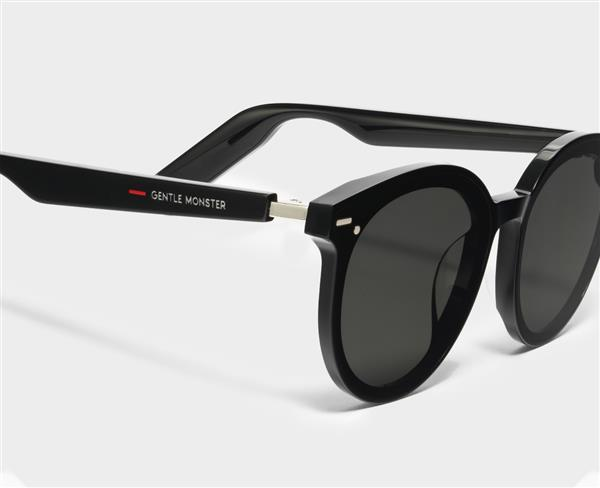
As the most successful of all wearable products, smart phones have successfully brought together personal shopping, reading, entertainment, social and other needs in a "small screen.
However, with the development of smart phones to the bottleneck, the "decentralization" of smart phones will be the main topic for a long time in the future: we should create the most suitable wearable devices according to different usage scenarios, instead of putting all solutions in the basket of mobile phones.
The first step we focus on here is naturally wearable devices in the traditional sense, such as bracelets, watches, glasses, headphones, shoes, socks, head displays, etc., which have almost no cognitive burden.
What we have to do is not how to make them smarter, but how to continuously improve their application intelligence.
Second Generation: All Things Have Spirits
Needless to say, the gradual innovation of the first generation of traditional wearable devices is to try to intelligentize our unexpected wearable products.
Here clothes, hats, gloves, scarves, rings... everything can be "pointed".

Cocoon, a wearable device designed by Janao Denys, can be either an ordinary hat, or use built-in headphones and controllable LEDs to bring yourself into a unique ideal light and sound protection area.
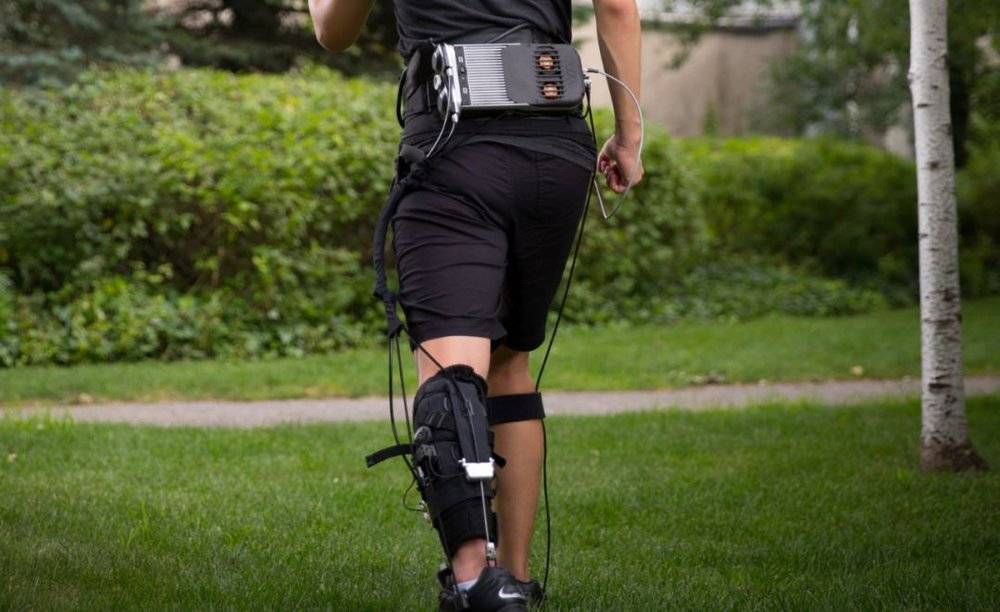
The "shorts", developed by Harvard University's Institute of Synthetic Biology (Wyss), can not only adapt to various terrains and speeds, but also "pull" users to walk and run.
Third Generation: Sensory Repair & Enhancement
The third-generation wearable device is no longer limited to the ordinary needs of ordinary people. It can provide extraordinary experience for some special people, or it can help the healthy development of physical fitness and physique.
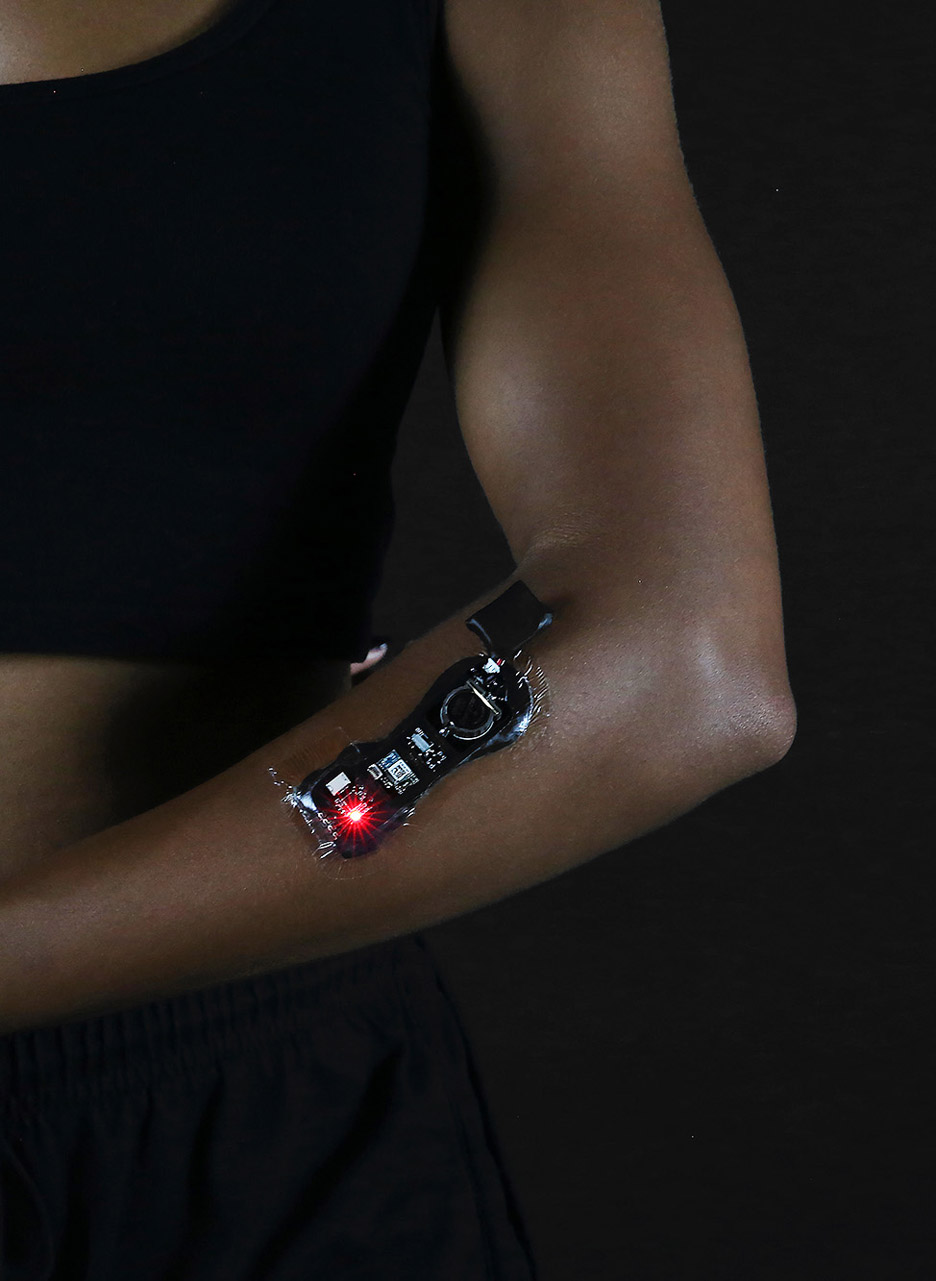
A new method pioneered by researchers at Carnegie Mellon University makes electronic skin patches that ElectroDermis can stick to the body like plasters.
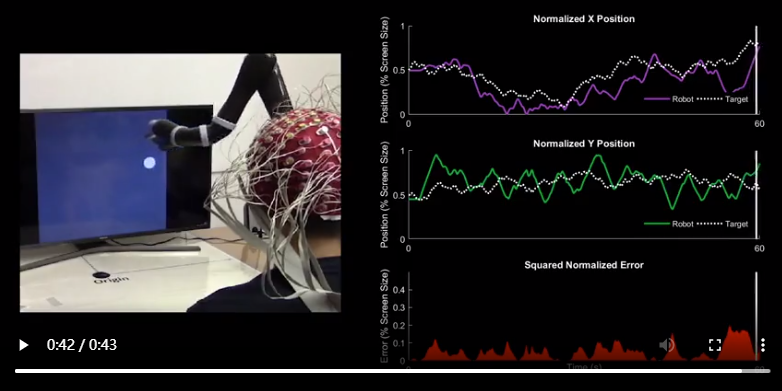
Professor Bin He of Carnegie Mellon University led his research team in cooperation with the University of Minnesota to successfully develop the first non-invasive mind-controlled robotic arm that can continuously track random motion of a computer cursor.
Fourth Generation: Virtual Reality

The first-generation wearable devices are still in the coupling stage, while the second-generation wearable devices are looking for the optimal solution; the third-generation wearable devices are trying to make up for and extend personal potential, and the fourth-generation wearable devices are trying to create a virtual world.
Here it is possible to empower the third generation to amplify personal perception based on the second-generation optimal solution, and then blur the boundary between virtual and reality in the fourth generation.
As for whether there is a fifth generation, by then we may use a ring or any wearable device to shuttle through virtual and reality anytime and anywhere for various fidelity experiences. What's more, the so-called wearable devices may be condensed into nanoscale "chips" and directly implanted into the human body.
④
A must-see
○
The first-generation wearable devices must have no living space for entrepreneurs. Although we do not have the ability to directly leap into the fourth-generation wearable devices, the second-generation and third-generation wearable devices can be carried out at the same time.
And here in the second and third generation wearable devices, we are not clueless, there are a few key niches can be deeply explored.
First: Ring
In the life of modern people, which kind of wearable device is the most indispensable?
Watch?
Glasses?
Or headphones?
No, it's the ring.
As a form of wearable device with greater value, the ring is indispensable between couples and couples. In order to meet the social needs of the new era, it is necessary for the ring to strengthen its sense of existence.
Of course, it is not to say that adding a display screen to make the ring bloated is the only solution. For a wearable device with limited size, sensors and specific scene records are what it needs.
Second: Underwear
Although all kinds of sexy underwear emerge one after another after smart wear is on fire, but before solving the data security of this underwear, the recording and output of health and signs is what we need most.
Instead of turning it into sex toys in one step, it is better to take a step back and let it stay on top of the personal housekeeper.
Third: Tattoo
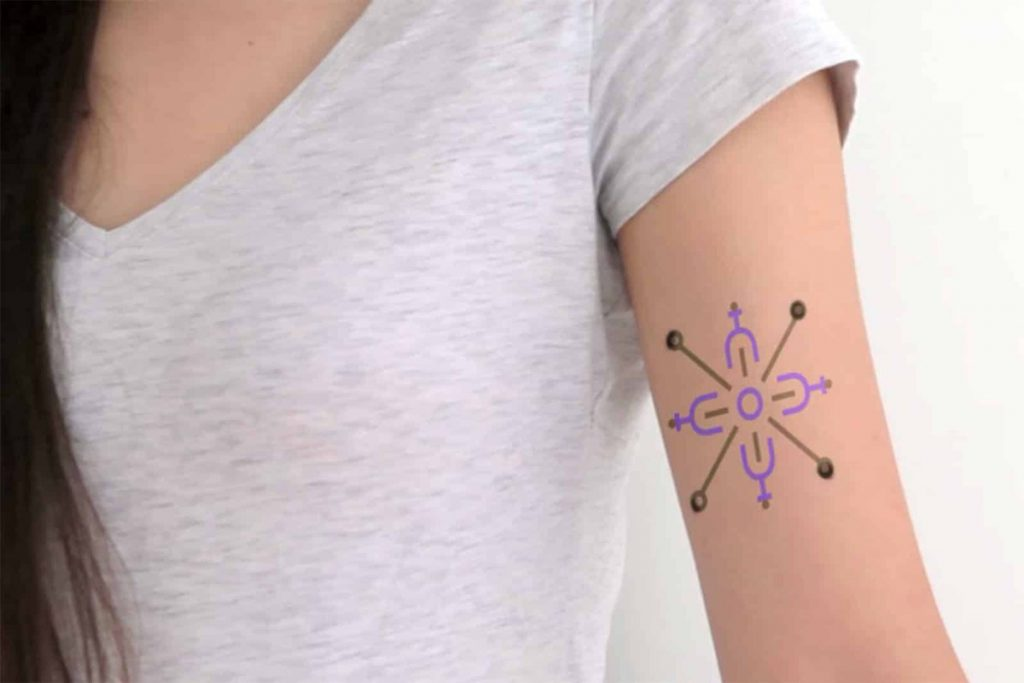
As early as 2017, the Massachusetts Institute of Technology published a study on "color-changing tattoos", which also used three nanoscale biosensors to replace tattoo ink and inject it under the skin to monitor the PH value.
In 2019, German scientists developed a special "tattoo ink" that can change the color with the changes in glucose, albumin and PH value in the human body, and these color changes can allow patients and doctors to monitor diabetes and kidney in real time. Disease and other chronic diseases.
Tattoo, a personalized culture, will likely be reborn under the "packaging" of science and technology; it is a small step for science and technology to "paint" directly on the human body in the future.
Fourth: Lens

In 2019, researchers at the Harvard School of Engineering Sciences (SEAS) developed an adaptive superlens; due to breakthroughs in superlens and artificial muscle technology, this instrument can not only complete real-time focusing, but also is not as large as traditional spherical lenses.
Of course, the intelligent wearing of rings and underwear is still not expensive. The key is how to define their usage ethics and usage scenarios. As for tattoos and lenses, since they are already integrated with people, full security and privacy have to be considered.
⑤
Three major trends in the future of smart wear?
○

In addition to these four application scenarios, we will face the following trends:
First: medical treatment
As the earliest scene of intelligent wearable devices, health will further penetrate the daily life of users in the process of scientific and technological development.
For healthy consumers, it can play a role in monitoring, early warning and prevention.
Consumers with sub-healthy bodies can get the use experience that approaches normal people through smart wearable devices.
Of course, the above consumers may also get some kind of "super-sensory" and "superhuman" experience through smart wearable devices.
Second: Fashion
With the further development of science and technology and the further improvement of consumers' aesthetics, the boundary between fashion and science and technology will be further blurred.
In order to maximize the value of the science and technology field, it often deliberately creates and enlarges a certain "sensory" experience. In addition, the fashionable technology products can eliminate the wariness of users and the discrimination of onlookers. This makes the technology products more and more exquisite.
Although it is said that the fashion of technology products is a major trend, brand tone is not so easy to eliminate, just like Xiaomi's easy entry into the field of smart jewelry will only be thankless.
Third: Aging
For the global problem of population aging, which can not be avoided in the world, the aging design friendly to the elderly is not only the field of intelligent wear, but also the reality that manufacturing, design and creativity need to face.
The key to aging design is to provide more help to the elderly without causing cognitive burden.
⑥
The biggest problem: personal application ecology
○
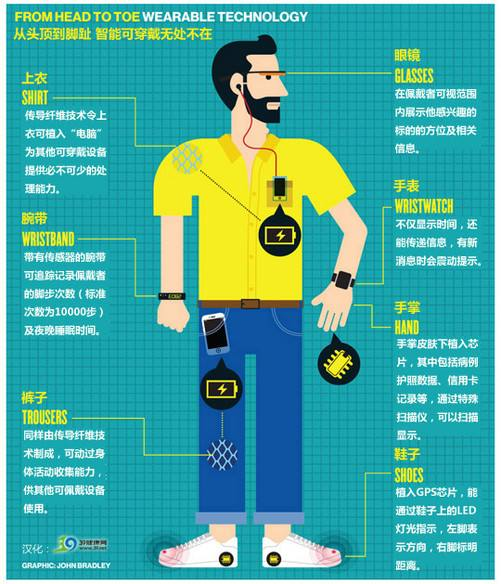
The "White Paper on the Development of Intelligent Mobile Terminal Industry in the 2019 World" recently released by China Electronics Information Industry Development Research Institute and others shows that Shenzhen is already the largest R & D and production base for smart wearable devices in China, producing about 80% wearable products in the world.
However, the problem is that we have almost no explosive models except mi band, which is a very low-profit wearable product. That is to say, we do not have the right to speak in the field of smart wear.
Google, Microsoft, and Sony are certainly powerful, but this is not the reason why they stand on the cusp of the storm; they are willing to invest in hardware and bet on the future. This is what we lack.
Of course, large domestic Internet companies are busy with their own Internet ecology and have no time to gamble on the smart hardware that cannot see tomorrow. The concept of domestic start-up companies is a bit interesting, but it is also a fact that they collapse while walking. It was not until Xiaomi and Huawei entered the market that we had some expectation.
Xiaomi and Huawei do not have any earth-shattering concept as soon as they come up, but carefully avoid the pit of their predecessors step by step. This is really wise. However, it is very difficult for us to succeed if we always walk behind others.
On August 9, 2019, Hongmeng was born. We walked in front of the world for the first time, but the cynicism that came on our faces showed us the biggest weakness of Chinese manufacturing: the lack of application ecology; the migration cost of existing application ecology is one thing, and some people are unwilling to migrate is another.
And smart wear is nothing more than that.
Smart wear is not to give a chip to traditional wear products and everything will be fine.
We also need to consider the usage scenario, usage logic, usage restriction and usage ethics of each wearable product. Only when we consider the usage details of smart wear more comprehensively can it be more smoothly integrated into consumers' living habits.
This is precisely the application ecology that we need to plan for smart wearable devices.
Although this application ecology determines that users can communicate socially with others, it is essentially an application ecology based on personal application scenarios; this determines that its privacy has a higher priority than social attributes.
So how to create such an ecology?
Hongmeng's idea is quite good, to build a set of underlying system based on the interconnection of everything.
For personal application ecology, we should not only consider the application scenario of a single intelligent wearable device, so in case there are more and more wearable devices around individuals, it will cause great operation cost and waste of calculation power: users have to face different interactive means when facing each wearable product, and different wearable products will repeatedly record the same characteristics and even generate different data.
Therefore, it is very necessary for us to develop wearable products that perform their duties under the same interactive system as individuals; and they can communicate and back up data with each other.

It is not so much that the fourth industrial revolution is the technological biotechnology revolution after the steam revolution, the electric power revolution, and the computer information revolution; it is better to say that it is a consumption scene and a revolution in life needs. We need to redefine the life scene of consumers and provide consumers Only by providing better choices can we break out of the siege.
Smart wear is a small trend born under this background. In addition to the existing market capacity and life needs, its market prospect lies in the establishment of personal application ecology. We do not need a new set of APP or small programs, but we need this kind of smart wearable hardware to form a relatively independent ecological collection.
It is not as "centralized" as smartphones, and we don't need the next "smartphone" after smartphones are "marginalized".
Moreover, due to the pervasive use of smart wearable devices in the future, there will be no absolute center for individuals; personal experience will be "decentralized" by more and more smart wearable devices, and the redistribution of this power To a large extent, it depends on personal will and personal habits.
This also determines that if future communication manufacturers want to "kidnap" the next generation of consumers, they must create one set of ecological solutions around the users' living habits. Use key positions in the ecological chain (explosive products) to attract users, and then use the user ecology built around this key position in the ecological chain to retain everyone.
PS: Some materials come from @ Tiger Smell @ Play
The copyright of this work belongs to 何鲸洛. No use is allowed without explicit permission from owner.

New user?Create an account
Log In Reset your password.
Account existed?Log In
Read and agree to the User Agreement Terms of Use.

Please enter your email to reset your password
It is really great to be able to write such articles. This is the design foreseeing the future. I don't know if it is your independent opinion? If there are references to relevant documents (articles), I would like to continue reading. Please let me know.
Picture pixels are general